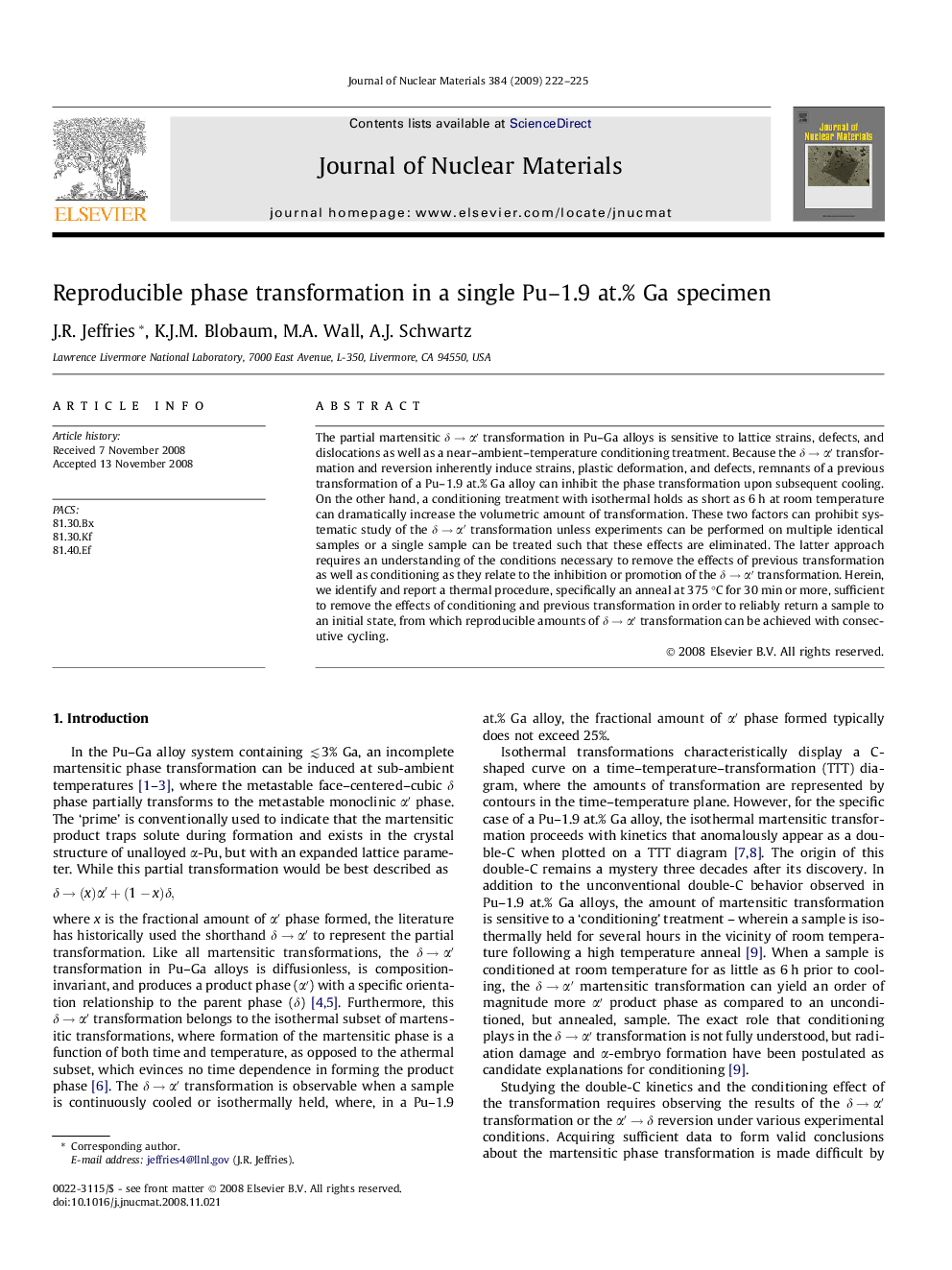| Article ID | Journal | Published Year | Pages | File Type |
|---|---|---|---|---|
| 1567973 | Journal of Nuclear Materials | 2009 | 4 Pages |
Abstract
The partial martensitic δâαⲠtransformation in Pu-Ga alloys is sensitive to lattice strains, defects, and dislocations as well as a near-ambient-temperature conditioning treatment. Because the δâαⲠtransformation and reversion inherently induce strains, plastic deformation, and defects, remnants of a previous transformation of a Pu-1.9 at.% Ga alloy can inhibit the phase transformation upon subsequent cooling. On the other hand, a conditioning treatment with isothermal holds as short as 6 h at room temperature can dramatically increase the volumetric amount of transformation. These two factors can prohibit systematic study of the δâαⲠtransformation unless experiments can be performed on multiple identical samples or a single sample can be treated such that these effects are eliminated. The latter approach requires an understanding of the conditions necessary to remove the effects of previous transformation as well as conditioning as they relate to the inhibition or promotion of the δâαⲠtransformation. Herein, we identify and report a thermal procedure, specifically an anneal at 375 °C for 30 min or more, sufficient to remove the effects of conditioning and previous transformation in order to reliably return a sample to an initial state, from which reproducible amounts of δâαⲠtransformation can be achieved with consecutive cycling.
Related Topics
Physical Sciences and Engineering
Energy
Nuclear Energy and Engineering
Authors
J.R. Jeffries, K.J.M. Blobaum, M.A. Wall, A.J. Schwartz,
